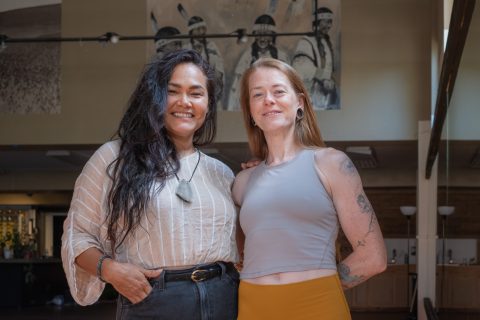CTUIR leadership applauds Biden’s DOI pick
Published 8:00 am Tuesday, January 19, 2021
PENDLETON — Northeast Oregon tribal leaders are applauding President-elect Joe Biden’s choice of Rep. Deb Haaland, D-New Mexico, to lead the Department of Interior as part of his incoming administration.
Biden announced last month that Haaland was his choice to head the DOI, which oversees agencies like the Bureau of Land Management, U.S. Fish and Wildlife Service, Bureau of Indian Affairs and the National Parks Service.
Trending
Don Sampson, chief of the Walla Walla Tribe and former chairman and executive director of the Confederated Tribes of the Umatilla Indian Reservation, said it’s the first time in the history of the nation that a Native American has been nominated to the position and that Haaland was one of the first Native American women elected to Congress.
“As an attorney and legislator she has a critical knowledge of the history of the country, particularly treaty and legal rights, like the negotiated rights between the U.S. and the Umatilla tribes,” Sampson said.
Sampson said he works as a climate change project director for the Affiliated Tribes of Northwest Indians and is familiar with Haaland’s position on the topic and how it relates to tribal land.
“We are working with the incoming administration’s transition team on climate change and what we can be doing here in the Northwest,” Sampson said. “We need resources to reduce wildfire fuels in our forests and the government needs to understand how we’ve traditionally used controlled fires for thousands of years.”
Sampson said Haaland will bring tribal tradition and ecological knowledge to her new role and he looks forward to seeing her correct the work Trump did to roll back protections of sacred lands. She will also have a better understanding of issues facing the Department of Interior that affect Native Americans, like drilling in the Arctic National Wildlife Refuge, running oil pipelines through reservations or opening up caribou herds to hunting.
“What is really lacking under the current Trump administration is a lack of recognition of tribal sovereignty and the relationships between tribes and the U.S. government,” Sampson said.
Trending
Kathryn Brigham, board of trustees chairman of the tribes, said she, too, is excited for Haaland’s appointment. Brigham said Haaland will well represent the nation’s 574 federally recognized tribes.
“Quite frankly, it is an historic event to have a tribal member nominated to the cabinet,” Brigham said. “She’s lived on a reservation and knows what it’s like — she knows tribal concerns.”
Brigham said as the secretary of the Department of Interior, Haaland will be looking at tribal jurisdictions within the U.S. and the specific needs of Native Americans who are concerned about future generations and sustainable land use.
“We all have different needs, but we are all looking to the future to see how we can survive,” she said. “This was our land before it was the U.S. and we’ve always been taught to take care of the land so it takes care of you.”
Everyone needs clean air, clean water and unpolluted land, Brigham said, and she thinks Haaland can lead an effort to reverse recent policies that loosened regulations on pollution.
“I learned from tribal leaders, including my grandfather, Sam Kash Kash, to fight real hard for today, but not at the expense of our children and their children,” she said.
Brigham said Native Americans understand there is a circle of life that includes humans, animals, land and water — everything is interconnected.
“Water means life to everyone. Fish are important for our treaty rights, but a lot of non-Indians don’t eat fish and don’t understand the importance of salmon to the Pacific Northwest, but people do understand you need water to survive,” she said.
Another aspect of tribal life that Brigham said Haaland would lend keen insight into is that most reservations are rural and lack adequate access to infrastructure, like cellphone service and the internet. When schools went to teaching online, she said some tribal students were left behind.
“We are one of the rural reservations, but not the most rural,” Brigham said. “Twenty-five percent of our reservation doesn’t have cell service and we are working to get the internet for students who have to learn from home, but a lot of the reservations really lack those services.”









